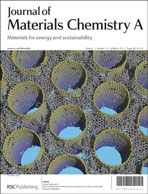Synthesis and electrochemical behaviors of layered Na0.67[Mn0.65Co0.2Ni0.15]O2 microflakes as a stable cathode material for sodium-ion batteries†
Abstract
Stable Na+ ion storage cathodes with adequate reversible capacity are now greatly needed for enabling Na-ion battery technology for large scale and low cost electric storage applications. In light of the superior Li+ ion storage performance of layered
![Graphical abstract: Synthesis and electrochemical behaviors of layered Na0.67[Mn0.65Co0.2Ni0.15]O2 microflakes as a stable cathode material for sodium-ion batteries](/en/Image/Get?imageInfo.ImageType=GA&imageInfo.ImageIdentifier.ManuscriptID=C3TA01430D&imageInfo.ImageIdentifier.Year=2013)

 Please wait while we load your content...
Please wait while we load your content...